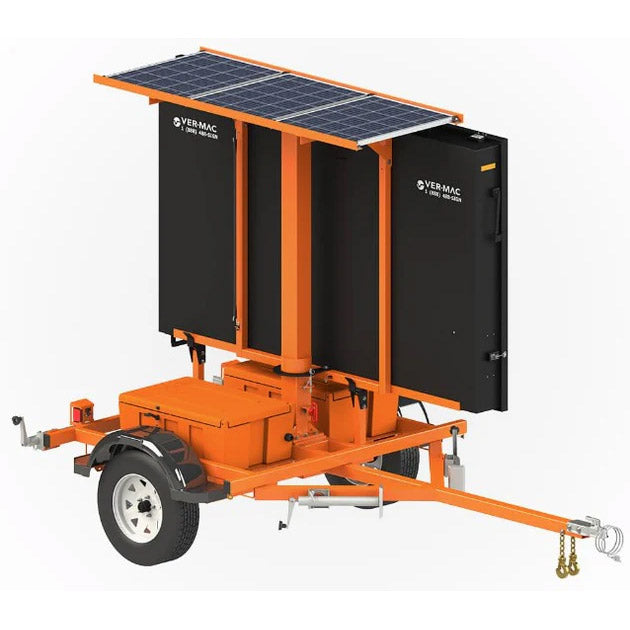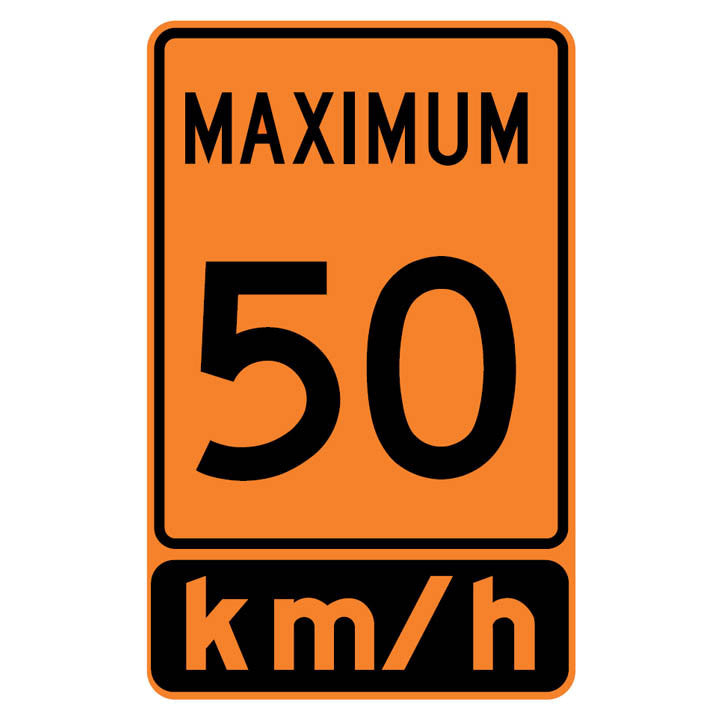
MTO-Approved Vs. Non-Approved Traffic Signage
Table of Contents
- What is the MTO?
- MTO Approved Traffic Signage
- Non-Approved Traffic Signs
- The Importance of Using MTO-Approved Signs
- Comparing MTO-Approved and Non-Approved Traffic Signs
- Where are MTO-Approved Traffic Signs Used?
- Consequences of Using Non-Approved Traffic Signs
- How to Identify MTO-Approved Signs?
-
Why Choose Barricade Traffic Services for MTO-Approved Traffic Signs?
Traffic signs play a critical role in keeping our roads safe and organized. Clear, consistent, and reliable signs guide you through construction zones, detours, and speed limits. In Ontario, MTO-approved traffic signs stand apart from non-approved signs—do you know the difference? Understanding these differences is crucial for construction companies, municipalities, and traffic control companies.
Let’s explore the distinctions between MTO-approved traffic signs and non-approved signs, and why it matters to road safety and compliance.
What Is the MTO?
The Ministry of Transportation of Ontario (MTO) is the government body responsible for overseeing and regulating Ontario's transportation systems, including roadways, highways, and bridges. The MTO ensures the safety, efficiency, and sustainability of Ontario’s transportation infrastructure. It develops and enforces guidelines for vehicle licensing, road maintenance, and traffic control. The MTO sets strict standards for traffic signage to ensure uniformity, safety, and compliance across roads and construction zones.

MTO-Approved Traffic Signage
The Ministry of Transportation Ontario (MTO) sets strict rules for traffic signs to ensure top quality, visibility, and durability. It rigorously tests and approves each sign for use on Ontario’s roads and highways.
Key characteristics of MTO-approved traffic signs include:
- Standardized Design: They follow Ontario Traffic Manual (OTM) standards, ensuring the correct shape, color, font, and size.
- High Reflectivity: Approved signs use reflective materials to ensure visibility during the day, night, and adverse weather conditions.
- Durable Materials: Made from robust materials like aluminum, they resist wear and tear from weather, UV rays, and impact.

Non-Approved Traffic Control Signs
Non-approved traffic signs are those that do not meet MTO standards. They may look official but often don’t meet the quality or standards for public roads.
Common characteristics of non-approved signs include:
- Non-Standard Design: They might use incorrect fonts, colors, or layouts, leading to confusion for drivers.
- Poor Reflectivity: Without high-quality reflective materials, these signs are harder to see in low-light conditions.
- Less Durable Materials: Cheaper materials can deteriorate quickly, making the signs unreadable or ineffective.
- Non-Enforceable: Signs that fail to meet MTO standards are not legally enforceable and can cause liability issues.
The Importance of Using MTO-Approved Signs
1. Safety
Safety is the most critical reason to use MTO-approved traffic signs. Standardized, high-quality signs ensure that drivers can quickly understand and respond to instructions. Non-approved signs may cause confusion, leading to accidents or traffic disruptions.
2. Compliance with the Law
Traffic control companies and construction crews must use MTO-approved signs to follow Ontario’s traffic laws. Failure to do so can result in fines, project delays, and legal liabilities.
3. Durability and Longevity
MTO-approved signs are built to withstand harsh Canadian weather conditions, including snow, rain, and extreme temperatures. Non-approved signs, often made from substandard materials, may fade, crack, or warp over time.
4. Consistency
When all signs adhere to MTO standards, drivers know what to expect, reducing uncertainty and promoting smooth traffic flow. Non-approved signs can disrupt this consistency, increasing the likelihood of errors and accidents.

Comparing MTO-Approved and Non-Approved Traffic Signs
Material and Durability
MTO-approved signs use high-quality, durable materials that can endure harsh weather, UV exposure, and wear and tear. These signs often include reflective sheeting that meets MTO specifications to ensure visibility both day and night. Non-approved signs often use lower-quality materials, making them less durable and potentially unsafe over time. Without reflective surfaces or weather-resistant coatings, non-approved signs may fade or become illegible, creating safety risks.
Design Standards and Compliance
The design of MTO-approved signs adheres strictly to the Ontario Traffic Manual (OTM) specifications. These guidelines specify the shape, size, colors, fonts, and symbols for all traffic signs to ensure consistency across Ontario. For example, construction warning signs require black lettering on an orange background and must use specific symbols to clearly communicate risks. Non-approved signs may deviate from these standards, leading to inconsistency and confusion among drivers.
Visibility and Reflectivity
MTO-approved signs use reflective materials that meet retro reflectivity standards, ensuring high visibility in low-light or nighttime conditions. These reflective surfaces are crucial for safety, as they allow drivers to see and respond to signage well in advance. Non-approved signs may lack proper reflectivity, making them hard to see in poor visibility, which increases the likelihood of accidents.
Installation and Placement
Approved traffic signs are designed for secure installation in various conditions, from highways to construction zones. The MTO specifies installation methods to ensure stability and visibility, including the required height and angle for sign placement. Non-approved signs may not meet these requirements, leading to improper installation. This can result in signs that are unstable, obscured, or otherwise ineffective in guiding traffic.
Legal Implications and Liability
Using MTO-approved signs ensures compliance with provincial laws and reduces the risk of legal consequences. For example, construction companies that don't use approved signage in road work may face penalties for non-compliance. If an accident occurs, lacking MTO-approved signs could increase liability. Non-approved signs can also expose organizations to legal action for not meeting regulatory standards.
Cost Considerations
While MTO-approved signs may have a higher upfront cost because of their quality and compliance, they are a worthwhile investment. Their durability and effectiveness reduce the need for frequent replacements, ultimately saving money in the long run. Non-approved signs may seem cost-effective initially but often result in higher expenses due to wear and tear, lack of durability, and potential fines for non-compliance.
Where are MTO-Approved Traffic Signs Used?
MTO-approved traffic signs are required in a variety of locations, including:
- Highways and Major Roads: For speed limits, lane usage, and exit information using exit signs.
- Construction Zones: To warn drivers of roadwork and detours, and oncoming traffic using clear road construction signs.
- Municipal Roads: To indicate parking rules, school zones, and other localized regulations.
- Temporary Traffic Control Areas: For events, maintenance, emergencies, temporary conditions, or closed lanes.

Consequences of Using Non-Approved Traffic Signs
1. Legal Penalties
Using non-approved signs in construction zones or other areas can result in fines for traffic control services companies.
2. Increased Liability
If an accident occurs because of unclear or ineffective signage, the responsible party may face lawsuits or insurance claims.
3. Reputational Damage
Traffic control companies that use non-approved signs risk damaging their reputation for safety and reliability.
How to Identify MTO-Approved Signs
When selecting traffic signage, look for the following indicators to ensure MTO approval:
- MTO Certification: The supplier should provide documentation verifying compliance with MTO standards.
- Reflective Sheeting Grade: Confirm that the signs use high-quality reflective materials.
- Construction Materials: Ensure signs are made from durable materials. typically aluminum.
- Manufacturer's Reputation: Purchase signs from Barricade Traffic Services, known for providing MTO-approved solutions.

Why Choose Barricade Traffic Services for MTO-Approved Traffic Signs?
At Barricade Traffic Services, we specialize in providing MTO-approved traffic signs, construction signs, and traffic signage to ensure safety and compliance.
Our Advantages:
- Wide Selection: From permanent road signs to temporary construction signage, we offer a comprehensive range of MTO-approved products.
- High-Quality Materials: Our signs are crafted from durable, weather-resistant materials to ensure longevity.
- Expert Guidance: Need help selecting the right signs? Our team of experts will guide you through the process to ensure compliance with MTO regulations.
- Quick Turnaround: We understand the urgency of your projects and provide fast delivery and setup of traffic signage.
The difference between MTO-approved traffic signs and non-approved signs is not just a matter of quality—it’s a matter of safety, legality, and reliability. Traffic control companies and contractors must prioritize MTO-approved signage to ensure compliance, protect workers and motorists, and maintain their reputation.
For reliable, MTO-approved traffic signage, construction signs, and Jersey wall barriers, trust Barricade Traffic Services. Contact us today to learn more about how we can support your traffic control needs.




